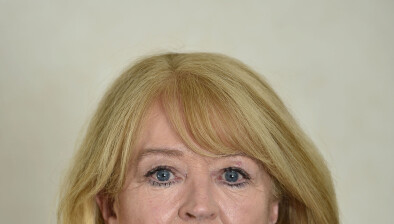Court of Appeal: €47,000 award upheld for woman who slipped while stepping over seats at GAA pitch

The Court of Appeal has upheld an award of €47,000 for a woman who injured her face while attempting to step over seats at a GAA pitch. The woman had been found 50 per cent liable for the injury, but the defendants argued that they should have no liability whatsoever based on the Byrne v. Ardenheath [2017] IECA 293 jurisprudence.

About this case:
- Citation:[2023] IECA 91
- Judgment:
- Court:Court of Appeal
- Judge:Mr Justice Seamus Noonan
Delivering judgment in the case, Mr Justice Seamus Noonan held that the present case was quite different from Byrne. The defendant’s expert had admitted that the seating was slippery and inappropriate to stand on. Further, it was reasonably foreseeable that people would stand on the seats. Accordingly, there was a danger on the premises for which the defendants were liable.
Background
The plaintiff was assisting in training junior camogie players. She was on the pitch at Roscrea GAA and was wearing studded boots. The pitch was surrounded by a wall which had a pedestrian entrance and a car park.
Between the pitch and the wall were five rows of seating, which consisted of low cement walls staggered at different heights. On each row was a galvanised metal sheet covered in plastic and painted in club colours.
At a certain point, a car arrived in the car park. The plaintiff attempted to step over several of the rows of seating in order to see over the wall and identify who was arriving. Unfortunately, her foot caught on the surface of the seating and she slipped forward. She suffered significant facial injuries in the accident.
Subsequently, the plaintiff issued personal injuries proceedings in the High Court. The expert engineering evidence agreed that the seating was slippery and that no risk assessment had been carried out by the club. The defendant’s expert outlined that the seating had been finished in amateurish fashion.
It was also agreed that people, particularly children, would be likely to step over the slippery seating and so the finish was not recommended. He concluded that, if the plaintiff’s evidence was accepted, it was probably that the seating contributed to the accident. However, it was outlined that the plaintiff contributed to her accident by not safely negotiating the step over and also by failing to use the pedestrian entrance to the side of the seating.
The trial judge held that it was commonplace for people to step over such seating and it was therefore reasonably foreseeable that people’s feet would contact the surface. The court accepted that the plaintiff had contributed to her accident and apportioned liability on a 50/50 basis. Accordingly, the plaintiff was awarded €47,000.
The defendants appealed the decision on the grounds of liability only. Relying on decisions such as Byrne and Lavin v. Dublin Airport Authority [2016] IECA 261, it was said that the mere fact of an accident at the premises did not render the club liable.
Court of Appeal
Mr Justice Noonan began his assessment by outlining that the present case was different to the factual scenarios in Byrne and Lavin. In those cases, there was no identifiable danger which caused injuries to the plaintiffs. This was the basis for stating that there was no liability for the occupiers of the properties.
However, in the present case, the evidence was that the seating was slippery and dangerous if people were to step on it. There was no dispute that people would standing and step over the seating for a long period of time and it was uncontroversial that the cladding was “entirely unsuitable for these activities”.
While the trial judge did not use this precise language, it was clear that she concluded that the slippery seating amounted to an unusual danger on the premises. Its presence represented clear negligence on the part of the defendant, the court said.
Further, in respect of the foreseeability of the mechanism of the accident, it could not be gainsaid that “the risk of somebody falling as a result of their foot or feet slipping on the surface of these benches was plainly foreseeable”. As such, it was also foreseeable that a person may suffer injuries on the benches, the court said.
While the plaintiff could have avoided the accident by using the pedestrian entrance or moving her foot in a different way, the fact remained that it was the slippery nature of the seating which caused her to fall and suffer damage.
A failure of a visitor to take care for their own safety was not an absolute bar to succeeding in a claim against an occupier, the court said. Equally, a failure by an occupier to take reasonable care was not divorced from the negligence of the visitor. The corresponding obligations of both occupier and visitor must be viewed as a whole.
Conclusion
While the actions of the plaintiff amounted to contributory negligence, they did not absolve the defendants from the consequences of their negligence, the court held. Accordingly, the court upheld the finding and apportionment of liability in the case and dismissed the appeal.
Carroll v. Phelan and Ors. [2023] IECA 91









